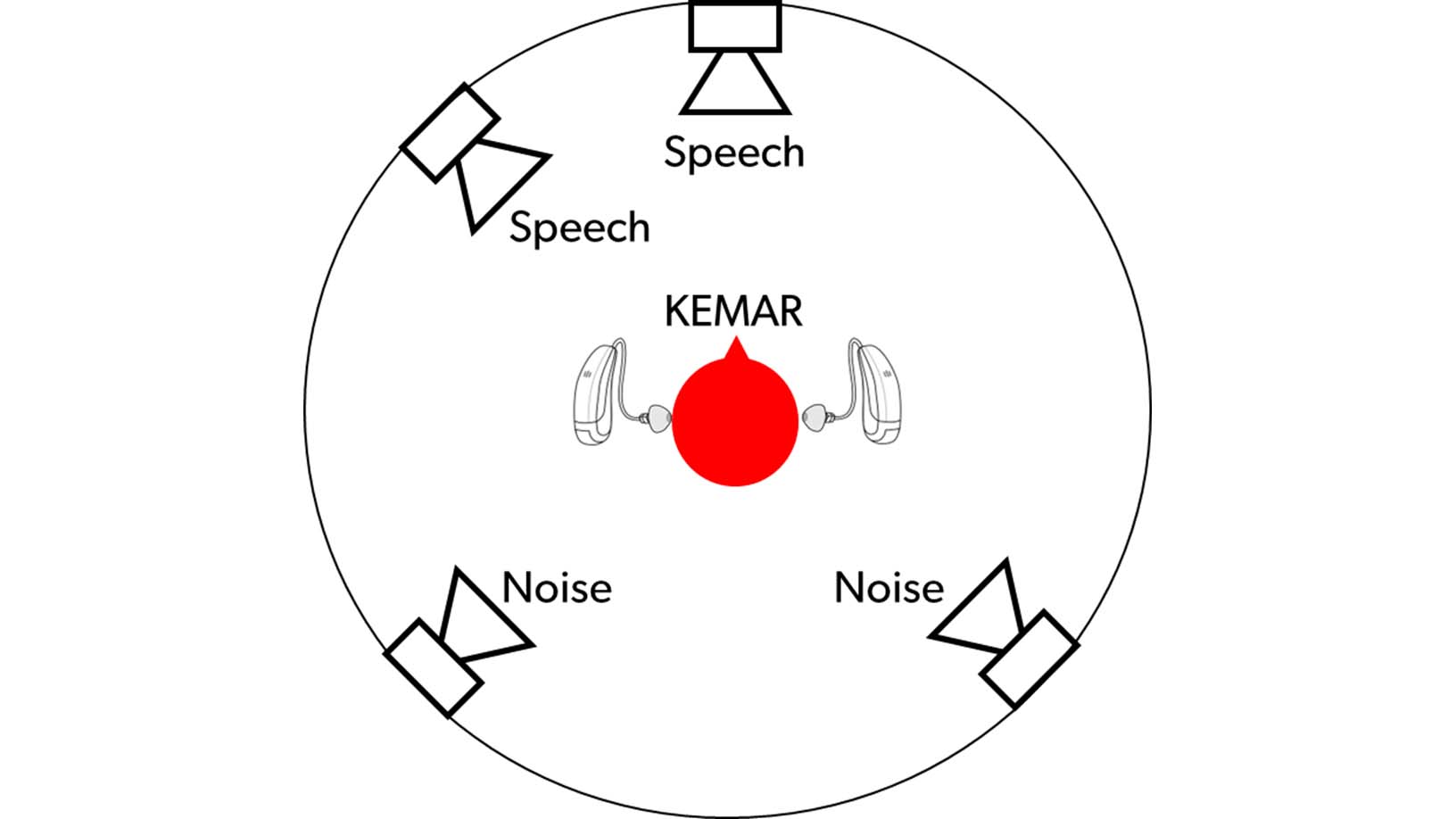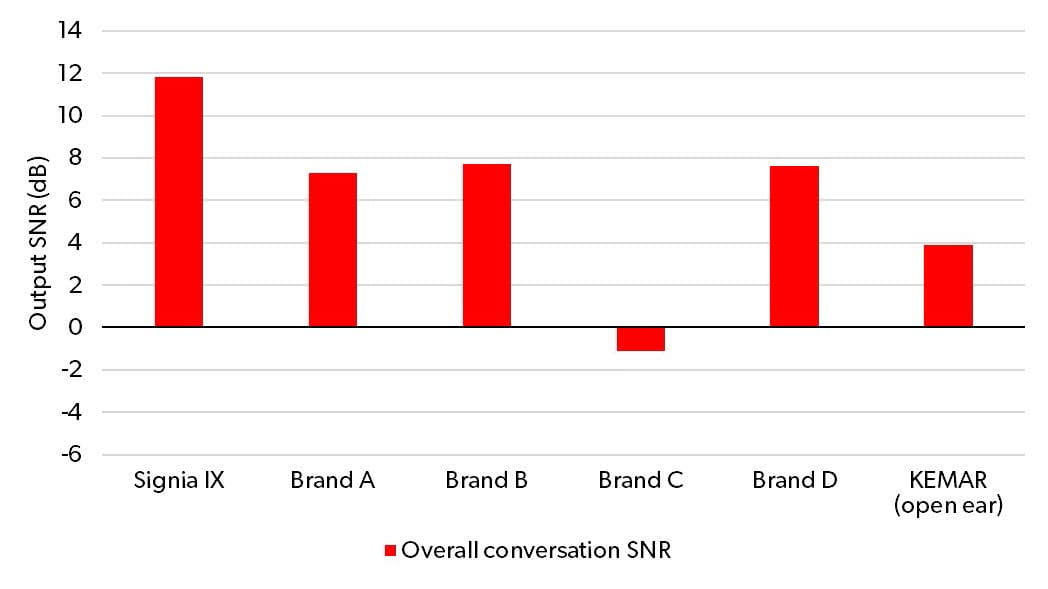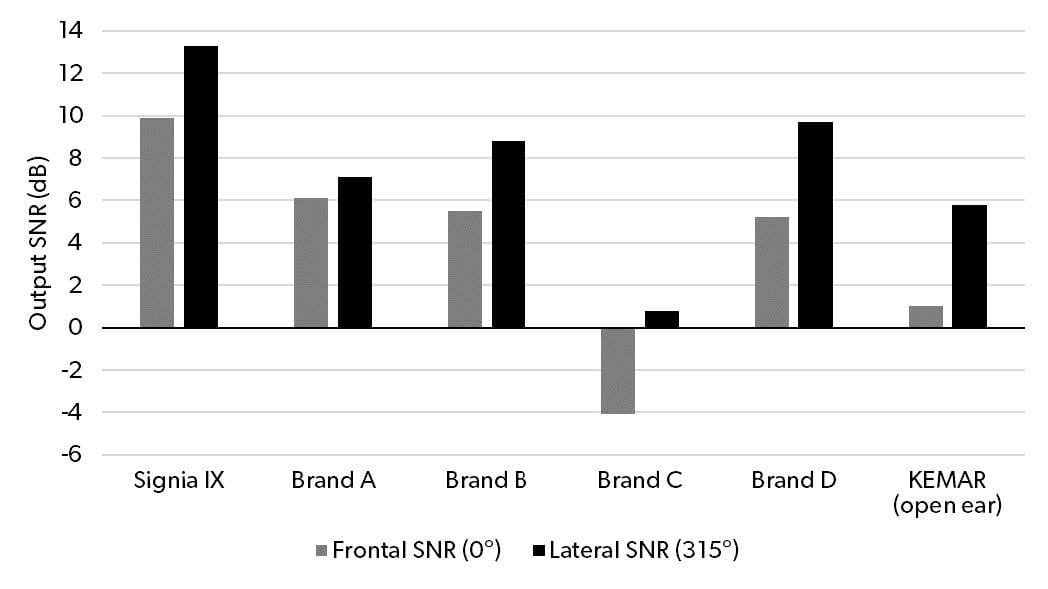
New study reveals Signia IX outshines competitors in group conversations
Created Updated
Breaking news for hearing care professionals and clients! Our recent study reveals that, compared with four leading hearing aid brands, Signia Integrated Xperience (IX) offers unparalleled speech-in-noise performance.
This new hearing aid technology accomplishes this by significantly improving the signal-to-noise ratio (SNR) in a simulated group conversation in noise.
Why does this matter? Improving the SNR is a critical prerequisite for enhanced speech comprehension. This means your clients can engage more confidently in group chats, even in challenging noise conditions.
We accomplished this through our innovative RealTime Conversation Enhancement (RTCE) technology. Read on to see how it works and why we stand out from other hearing aid brands.
The challenge of group conversations
Group chats in noisy environments have always been a tough hurdle for hearing aids. Many existing technologies like conventional beamforming and noise reduction have limitations in these settings. That is where RTCE comes in to offer a real solution.
How RTCE works
RTCE uses a three-step approach:
- Analyze: It analyzes a staggering 192,000 data points every second – identifying each individual speaker and analyzing conversation dynamics to reflect real-life conversations authentically.
- Augment: It uses the analyzed data to augment multiple independent auditory focus streams that lock on to and enhance each speaker’s voice. Meanwhile, Augmented Focus split processing technology processes background sound to ensure a comfortable, immersive conversational experience without distractions.
- Adapt: It adapts to the environment – updating one thousand times a second to fuse multiple focus streams into a live auditory space that smoothly adapts to the conversation as it flows and evolves.
Proven to outperform competitors
In this study, researchers evaluated Signia IX with RTCE. By recording the signals in the ears of a KEMAR manikin and applying an advanced analysis method, we could measure the SNR at the output side of the hearing aids. Here is how the setup looked:

A more detailed explanation of the setup can be found in the full white paper.
The Results
In this setup noise was played from behind, and the speech alternated between the front and side speakers to simulate a group conversation. Looking at the overall conversation and averaging the SNR across both talker locations, Signia IX was the standout performer, offering an SNR improvement of 4.1 dB over the nearest competitor.

We also analyzed the output SNR for the two-talker locations individually in front of and to the side of the hearing aid wearer. As seen in the figure below, Signia IX consistently outperformed its competitors for both locations.
For example, its output SNR for talkers located in front was 3.8 dB higher than the best competitor. For talkers located to the side, Signia IX was 3.6 dB better.

The results from this technical study supplement existing evidence, which showed a mean improvement for real wearers in speech understanding by approximately 25% in a one-on-one conversation scenario and 20% in a group setting in noise, when compared with hearing aids that did not use RealTime Conversation Enhancement. These improvements can be attributed to RTCE’s ability to individually target and enhance multiple talkers in real-time.
What this means for hearing aid wearers
Signia IX's standout performance is not just numbers on a chart—it has real-world implications for daily conversations.
Improving a hearing aid's output SNR has a direct effect on the wearer’s ability to understand speech. A minor improvement in SNR can drastically enhance speech intelligibility, as indicated in this chart:

The chart shows an ideal performance-intensity (P-I) function, which illustrates that the connection between SNR and speech understanding is not linear. Whereas SNR changes at exceptionally low or exceedingly high SNRs will have little effect, an SNR change of 4 dB around the steep part of the function could, in theory, result in a 40%-60% improvement in speech understanding.
This can mean the difference between struggling in a conversation and effortlessly engaging with others.
Because RTCE's can enhance multiple speakers in different directions, the wearer does not need to be facing the active speaker to hear well. This allows for more natural behavior in conversations, where the wearers freely move their heads without losing the thread of dialogue. This allows the wearer to stay involved and freely contribute to the conversation.
See Signia IX in action
Want to see it for yourself? Below, we demonstrate the groundbreaking RealTime Conversation Enhancement technology of Signia Integrated Xperience.